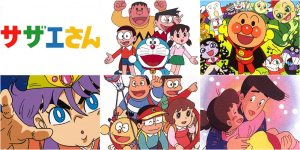
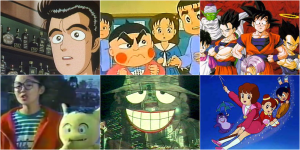 Oishinbo, Obocchama-kun, Dragonball Z, Manga Hajimete Omoshiro Juku, The Laughing Salesman, Sally the Witch
Oishinbo, Obocchama-kun, Dragonball Z, Manga Hajimete Omoshiro Juku, The Laughing Salesman, Sally the Witch
Magical Hat, Parasol Henbee, Ranma 1/2 Nettohen, Yawara, Chibi Maruko-chan, Heisei Tensai Bakabon
Tsuruhime Ja!, Daddy Long Legs, Samurai Pizza Cat, Brave Exkaiser, Mashin Hero Wataru 2, NG Knight & Lamune 40
Idol Tenshi Youkoso Yoko, Moretsu Ataro, Nadia: The Secret of Blue Water, Moomin, Magical Angel Sweet Mint, Karasu Tengu Kabuto
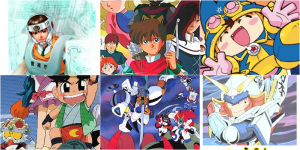
Patlabor on Television, Robin Hood no Dai Boken, Magical Taruruto-kun, Edokko Boy Gatten Taro, Karakuri Kengo Musashi Lord, Peach Command Shin Momotaro Densetsu
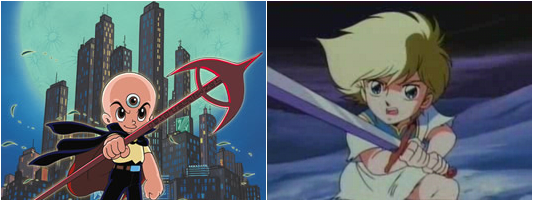
The Three Eyed One, Pygmalio
TV anime was loving super deformity and just a general sense of the pre-Yamato cartoon look in 1990. As well as the previously discussed stumpy robots, the SD and CB (Chibi/Child Bodied) look was all over the place. You could find it in both in modern material and in the adaptations of classic manga that had influenced the look to varying degrees.
In fact the sheer body of material coming from classic manga, makes me think that the idea we were sold on around the time of the Giant Robo OAVs, that of “retro anime” was already in full effect in 1990. That’s if it ever really existed and wasn’t just a continual current from when the so-called “retro” was modern.
Let’s take a look at when those manga started, and when their anime began.
- Sazae-san – 1946, anime started in 1969 and will carry on long after you have died.
- Doraemon – 1969, anime briefly appeared in 1973, then 1979-2005, before being given a reboot.
- Anpanman – 1968, anime started in 1988.
- Kiteretsu Daihyakka – 1974, anime started in 1988.
- Hai Akko Deso – 1980, anime started in 1988.
- Oishinbo – 1983, anime started in 1988.
- Obocchama-kun – 1986, anime started in 1989.
- Dragon Ball – 1984, anime started in 1986, switched to Dragon Ball Z in 1989.
- Laughing Salesman – 1968, anime started in 1989.
- Sally The Witch – 1966, first anime ran 1966-68, second began in 1989.
- Ranma ½ – 1987, anime started 1989.
- Yawara! – 1986, anime started 1989.
- Chibi Maruko-chan – 1986, anime started in 1990. A second, still running version began in 1995.
- Tensai Bakabon – 1967, first anime in 1971, second in 1975, third in 1990, fourth in 1999.
- Tsuruhime Ja! – 1973, anime started in 1990.
- Moretsu Ataro – 1967, first anime in 1969, second in 1990.
- Karasu Tengu Kabuto – 1986, anime started in 1990.
- Magical Taruruto-kun – 1988, anime started in 1990
- The Three-Eyed One – 1974, anime started in 1990
- Pygmalio – 1978, anime started in 1990.
Some of the other shows had manga, but started so close to the anime that I believe they were designed as multimedia projects. It looks like that Parasol Henbee is one of these, which is notable due to the fact Fujiko Fujio (A) was behind both the anime and manga. Between him and Fujiko F. Fujio they accounted for four of the shows airing in 1990 (Doraemon, Kiteretsu Daihyakka, Parasol Henbee, Laughing Salesman). Coming up behind was Fujio Akatsuka with Tensai Bakabon and Moretsu Ataro.
So our tally is one manga from the 1940s, six from the 1960s, three from the 1970s and nine from the eighties. Four of those are still visible today (Doraemon, Sazae-san, Anpanman and Chibi Maruko-chan). Had I been bit more prompt with this post, you could have added Dragon Ball too, but Dragon Ball Kai is being replaced by Toriko.
With the recent Level E adaptation going back to a manga that started 15 years ago, the plundering of the past still goes on, but I wonder if we’ll see it to this extent again? Maybe we have and didn’t notice due to the sheer quantity of other anime?
The often simple, overly cartoon-y look of these anime is very striking when you compare it to today’s anime, and even when compared with post-Yamato, pre-OAV anime. My gut tells me that post-Evangelion, you saw material that would have been on OAV move back to TV, and that changed the general look of anime on TV. Future posts will test that theory.
There is one other element influencing TV anime that struck me while looking for the images for this post. I mentioned it in the stumpy robots post, but when it came up for Parasol Henbee, I realised it was bigger than robots.
Often when searching for images, rather than the anime showing up in the image search, it was the videogame that had more of a presence on the internet. In part 3, I’ll be taking a look at the interaction with videogames during this period.
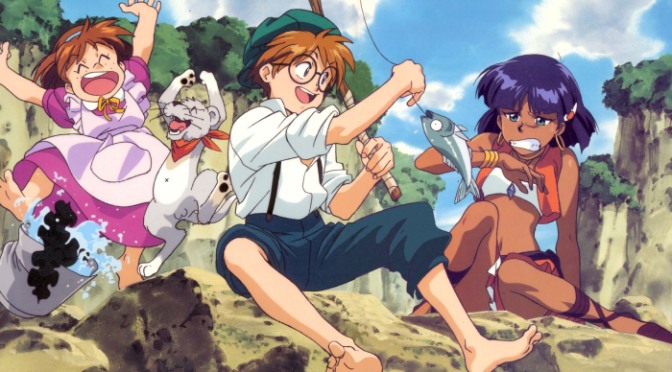
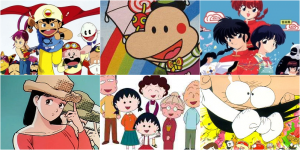
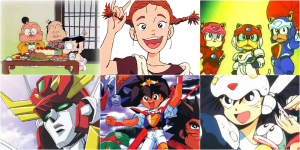
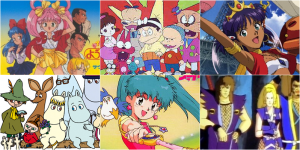
One thought on “1990s TV Anime Part 2 – What Anime Looked Like In 1990”
Comments are closed.